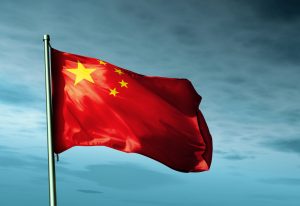Raymond Powell

On June 13th, China’s Foreign Ministry spokesman Wang Wenbin held an extraordinary press conference in which he made a series of audacious statements about the sprawling reach of Beijing’s territorial sovereignty and administrative authority. Placed in the context of China’s other recent actions and statements, the incredible size and shape of its regional ambitions are brought into sharp relief.
In simple terms, Beijing is determined to thoroughly dominate its region.
Wang began by addressing Canada’s protests over China’s harassment of its reconnaissance aircraft, which were enforcing United Nations sanctions of North Korea. It was China, Wang countered, that had reason to be “threatened” by “the Canadian military aircraft that flew thousands of miles to harass China at its doorstep.”
This is patent nonsense, of course. China voted for the U.N. sanctions in question, together with the “enhanced vigilance” against illicit petroleum transfers the unarmed Canadian plane was deployed to ensure. This wasn’t about threats to China. Rather, it was part of a brazen pattern designed to deter and intimidate foreign ships and aircraft from operating legally in China’s rapidly growing sphere of influence – specifically the international sea and airspace that China wants the world to accept as its own sovereign territory.
And make no mistake, that claimed territory is massive, including well over 3.5 million square miles of the maritime commons and the skies above it. Of course, China has not yet gained complete control over all this space, but its effective control is growing and its ambitions are increasingly clear.
Just ask the crew of the Australian P-8A Poseidon patrol aircraft that on May 26th was buzzed by a Chinese fighter jet near the Paracel Islands. The Chinese fighter also released flares near the Australian plane, followed by aluminum strips called chaff, some of which were dangerously ingested into the Poseidon’s engines.
Again, Beijing’s military spokesperson was quick to pin the “dangerous and provocative” label on the target of its aggression, declaring that the unarmed Australian plane “threatened China’s sovereignty” because it “approached China’s territorial airspace” over the Paracels. It is noteworthy that China did not claim the aircraft actually violated its (already exaggerated) territorial claims in the Paracels, but disinformation is central to its rhetorical strategy.
This strategy begins by effectively nullifying the U.N. Convention on the Law of the Sea, or UNCLOS, which China signed in 1996 and has never formally abrogated. While still giving occasional lip-service to this agreement, Beijing pivots to claim “historic rights” within the entirety of its baseless nine-dashed line around the South China Sea. Under this formulation, this vast maritime commons is unilaterally reclassified as China’s domestic territory, ostensibly marking it outside of UNCLOS’ purview.
China’s government then embarked on a bold campaign to back up its claim by sheer force of overwhelming presence. It did so by building out its occupied rocks and reefs into bases capable of sustaining both forward-deployed military assets and — more immediately — its rapidly expanding maritime militia.
Thus, when a U.N.-mandated tribunal ruled in 2016 that its claims were nonsense, Beijing could simply shrug its shoulders. Having already changed the facts on the reclaimed ground to ensure its smaller neighbors would dance to its tune, China has determined that might will eventually make right in the South China Sea.
Further north, China’s claims rely on a somewhat different obfuscation, as evidenced by Wang’s June 13 comments. Referring to the Canadian flights, he said that “none of the relevant Security Council resolutions mandated any country to deploy forces for surveillance operations in the sea or airspace under the jurisdiction of another country” (emphasis added).
Where specifically was this alleged violation of China’s “jurisdiction”? Wang didn’t elaborate, but we know that China has increasingly expansive views on this, and makes liberal use of smoke and mirrors to justify these claims as somehow consistent with international law.
We need only to look at another of Wang’s June 13 assertions to see this phenomenon in action: “According to UNCLOS and Chinese laws, the waters of the Taiwan Strait, extending from both shores toward the middle of the Strait, are divided into several zones including internal waters, territorial sea, contiguous zone, and the Exclusive Economic Zone. China has sovereignty, sovereign rights and jurisdiction over the Taiwan Strait.”
Wang’s device here is to conflate the definition of the territorial sea, which extends a mere 12 nautical miles from a nation’s coastline, with that of the 200 nautical mile exclusive economic zone. While UNCLOS does grant a degree of sovereignty over the former (and even that does not prohibit straight-line innocent passage), the latter grants the coastal state only the right to exploit maritime resources, while explicitly retaining the uninhibited freedom of navigation and overflight for “all nations.”
The bottom line here is that China is engaged in a long-term power play. Its mouthpieces will continue to muddy the rhetorical waters, believing that while Beijing cannot win the debate on the legal merits, it can keep its intimidated rivals off-balance while strengthening its military position until such time as it no longer matters what the law says.
No comments:
Post a Comment